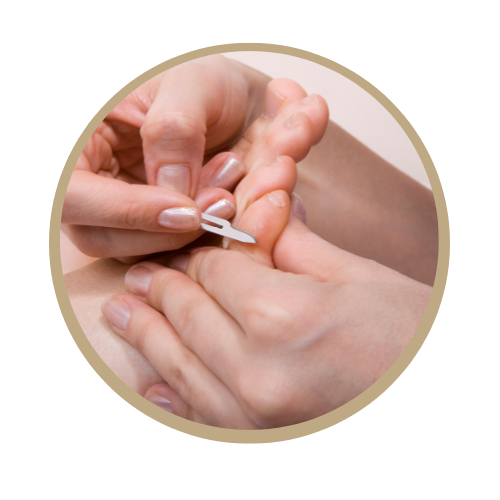Ancaster Foot Fixer and Orthotics Clinic
Corn Treatments
Corn Treatments
A foot corn, also known as a corn or heloma, is a small, thickened area of skin that develops in response to pressure or friction. Corns typically form on the feet or toes, and they can be painful when pressed. Here's an explanation of what a foot corn is and its common causes:
Causes of Foot Corns:
-
Pressure and Friction: The primary cause of foot corns is pressure and repeated friction on the skin. This can be due to wearing ill-fitting shoes, especially those that are too tight or narrow, which can compress the toes or rub against specific areas of the foot.
-
Toe Deformities: Conditions such as hammertoe or mallet toe, where the toes are bent or curled, can cause increased friction and pressure on certain areas of the toes, leading to the formation of corns.
-
Bony Prominences: Certain foot structures or abnormalities, such as bunions or bone spurs, can create points of increased pressure and friction, contributing to the development of corns.
-
Improper Foot Mechanics: Issues with the mechanics of the feet, such as overpronation or underpronation, can lead to uneven distribution of weight and increased pressure on specific areas, resulting in the formation of corns.
-
Wearing High Heels: High-heeled shoes can force the toes into a cramped position, increasing pressure on certain areas of the feet and toes, which may lead to the development of corns.
Common Types of Foot Corns:
-
Hard Corns (Helomas Durums): These are small, concentrated areas of thickened skin with a hard, dense core. They often form on the tops or sides of toes and can be more painful than soft corns.
-
Soft Corns (Helomas Molles): Soft corns have a rubbery texture and usually develop between the toes where the skin is moist. They are often caused by friction and moisture.
-
Seed Corns: These are small, discrete, and usually painless corns that can develop on the bottom of the feet. Seed corns can be caused by dry skin or reduced sweat gland function.


